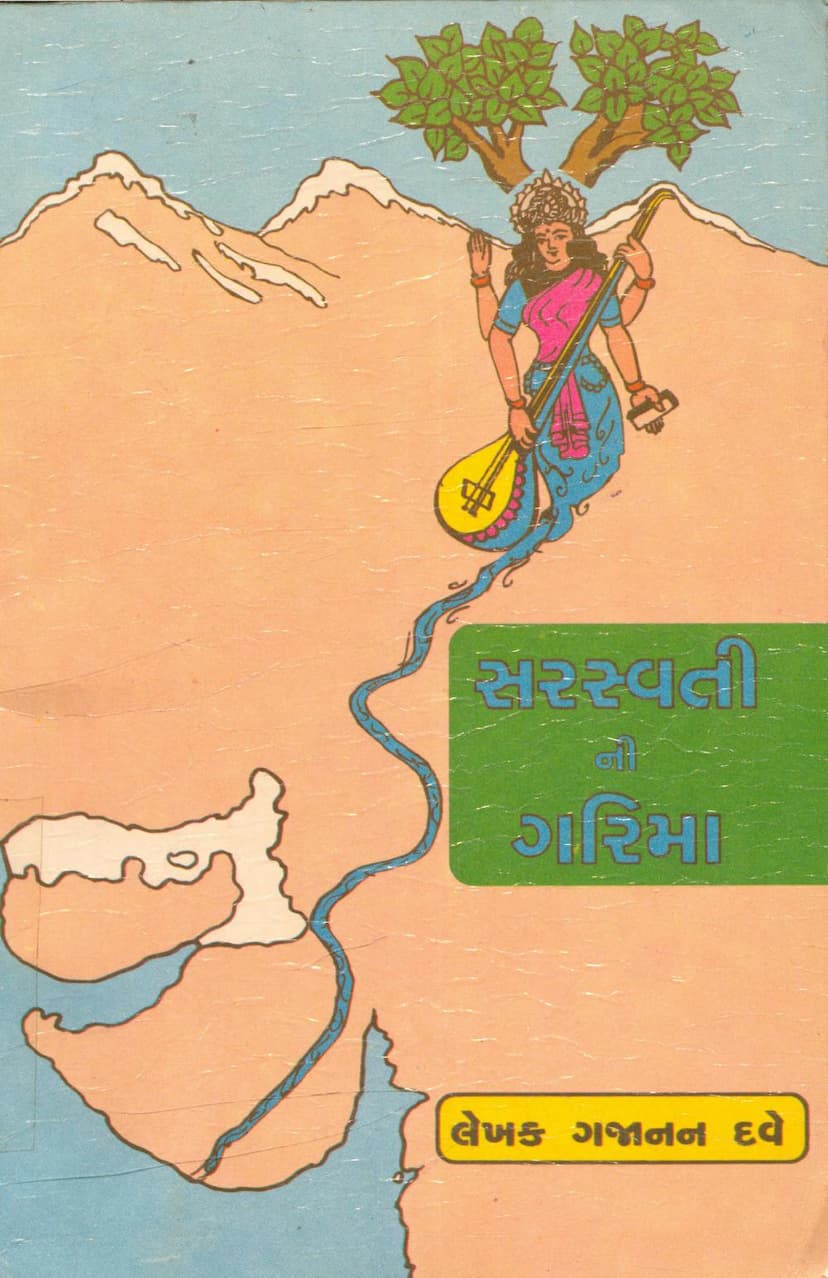Sarasvatini Garima
Added to library: September 2, 2025

Summary
Here's a comprehensive summary of the Jain text "Sarasvatini Garima" by Gajanan Dave, based on the provided pages:
Book Title: Sarasvatini Garima (The Glory of Sarasvati) Author: Gajanan Dave Publisher: Rashtriya Itihas Ujagar Yojna Catalog Link: https://jainqq.org/explore/032029/1
Overview:
"Sarasvatini Garima" is a book that aims to bring to light the ancient glory of Shri Sthal, identified as the modern-day Siddhpur. The book delves into historical events, the sacredness of the Sarasvati River and its pilgrimage sites, and offers a mythological analysis of their significance. It is dedicated to the esteemed ascetic, Pujya Shri Devshankar, at whose feet the author humbly places this work.
Key Themes and Content:
-
Siddhpur and its Ancient Glory: The book highlights the historical importance of Siddhpur (Shri Sthal) as a city comparable to heaven, renowned for its wisdom, intellect, and knowledge. It is presented as a pilgrimage site equal to Kashi. The text mentions that figures like Vishwamitra and others have visited its banks.
-
The Sarasvati River and its Significance: A significant portion of the book is dedicated to the Sarasvati River, its mythical origins, its course, and the tirthas (pilgrimage sites) along its banks. The book explores its evolution from a mighty Vedic river to its present state, acknowledging the challenges in tracing its exact geographical path due to natural transformations over millennia. It emphasizes the religious and social importance of bathing in and performing rituals by the Sarasvati, highlighting traditional beliefs and practices passed down through generations.
-
Rudra Mahalaya: The text touches upon the Rudra Mahalaya, a grand ancient temple in Siddhpur. It notes that it was built by the Gurjar king Mulraj and destroyed by the invading Alauddin Khilji in 1307 AD. The remnants of this magnificent structure still exist.
-
Mythological Narratives: The book recounts several mythological stories associated with the Sarasvati River and its tirthas. Notable narratives include:
- The Origin of Sarasvati: The story of Dadhichi Muni, his sacrifice, the creation of Vadvanala (a fiery serpent/being), and how Sarasvati, as a Brahmakumari, emerged as a river from the Himalayas to control the fire, becoming a vehicle for Vishnu to carry the Vadvanala to the west sea.
- The Significance of Tirthas: Descriptions of various tirthas along the Sarasvati, like Urvashram (Sarasvati's origin), Kedarnath, Sugandhtirth, Bhutishwar (Trljuginath), Rudrakoti (Rudraprayag), Kurukshetra, Pushkararanya, Shri Sthal (Siddhpur), and Prabhas Kshetra, detailing their historical and religious importance.
- The Story of Pipalada: How Pipalada, son of Dadhichi, was born from a seed and the subsequent events leading to his pursuit of justice.
- The Importance of Rituals: The book emphasizes the merit of various rituals like bathing in the Sarasvati, performing Pitru Tarpan (rituals for ancestors), and other acts of devotion and charity, especially during specific lunar phases and festivals.
-
Siddhpur's Cultural and Spiritual Heritage: The book highlights Siddhpur's rich heritage, including:
- Spiritual Luminaries: It mentions the presence of great ascetics and spiritual figures like Pujya Shri Devshankar and Pujya Siddh Motiram, whose penance and devotion are deeply revered. It also speaks of the influence of figures like Gorakhnath and Acharya Jayadatta Shastri, renowned for their wisdom and nationalistic contributions.
- Temples and Sacred Sites: The text details numerous temples and sacred sites within Siddhpur and along the Sarasvati, such as the Shri Govind-Madhav temple, Mahalaya Tirtha, Bindu Sarovar, and the remnants of the Rudra Mahalaya, emphasizing their spiritual significance and historical context.
- Social and Cultural Life: The book touches upon the social fabric, including the contributions of various communities and families, and the historical development of education and cultural activities in the region.
-
The Concept of "Purushartha" and Knowledge: The author, Gajanan Dave, emphasizes that true knowledge comes from experience, not just formal education. He draws parallels with figures like Valmiki and Tulsidas, who achieved greatness through their own efforts and spiritual discipline. The author's own background with the Rashtriya Swayamsevak Sangh (RSS) is mentioned as a significant influence on his experiential learning and character development.
-
The Role of Scriptures and Traditions: The book underscores the importance of Puranas as reflections of India's past history and repositories of profound philosophical truths. It advocates for understanding history through an Indian perspective, valuing the spiritual and ethical lessons embedded in these ancient texts. The narrative style is described as making complex knowledge accessible and engaging for the common populace.
-
Modern Context and Challenges: The book also subtly addresses contemporary issues, such as the decline of the Sarasvati River's natural flow due to the Moksheshwar dam, its impact on the local environment and religious sentiments, and the need for collective efforts to revive and protect this sacred heritage.
Author's Perspective:
Gajanan Dave expresses his pride in being born into a respected family in Siddhpur. He acknowledges the profound influence of his upbringing, the teachings of saints, and the blessings of respected individuals on his intellectual and ideological development. He believes that experiential knowledge gained through satsang (good company) and right conduct is invaluable.
Overall Impression:
"Sarasvatini Garima" is presented as a scholarly yet accessible work that celebrates the rich spiritual, historical, and cultural legacy of Siddhpur and the Sarasvati River. It is a tribute to ancient traditions, mythological narratives, and the enduring quest for knowledge and spiritual enlightenment. The book aims to inspire readers to connect with their roots and appreciate the profound wisdom embedded in Indian civilization.